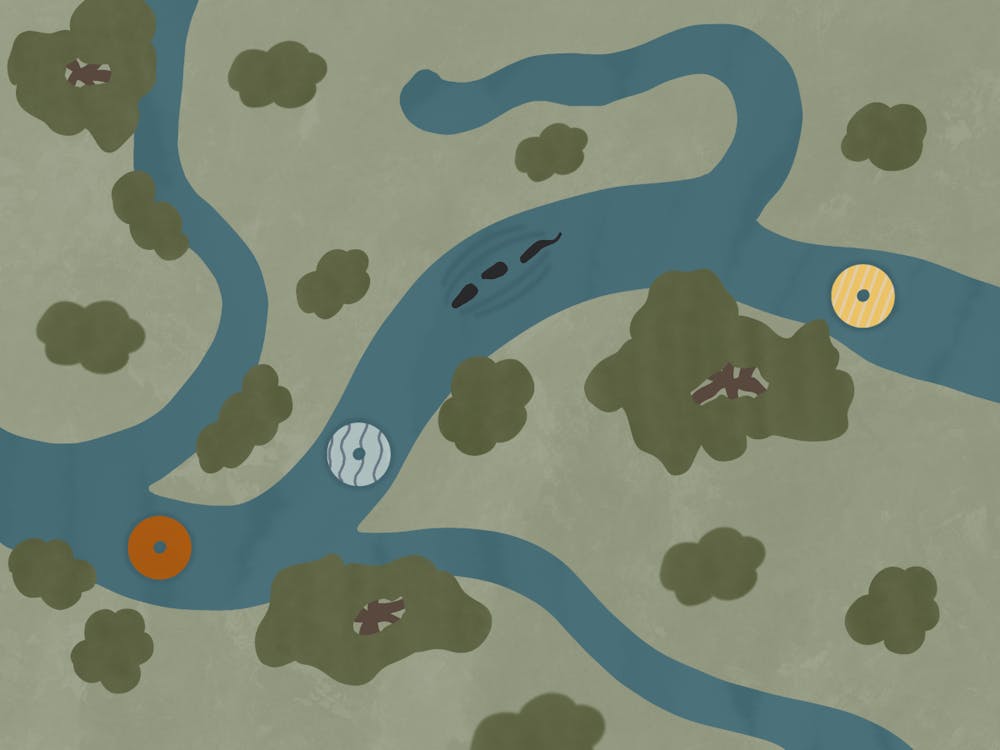The trip to Apopka was a roughly 100-mile journey from Jim Tatum’s home in Tampa. The 85- year-old waited in a sea of faces for his turn to say he hopes the Florida Department of Environmental Protection will take better action to save the springs.
Despite the fervent pleas of springs advocates, Tatum said he knew the state still wasn’t listening.
“They really don’t give a hoot about what we think, about the people,” he said.
Tatum advocated alongside nearly 40 state residents for stronger protections at the Sept. 12 FDEP annual public workshop on springs rulemaking in Apopka. Despite the meetings, citizens and activists argue rules limiting threats like overpumping and pollution have not been enforced properly enough to safeguard the Florida Outstanding Springs.
Thirty springs were designated “outstanding” in 2016, a title reserved for those of historic importance and a signal to preserve them for future generations. However, the Florida Springs Council and other advocacy groups have challenged the FDEP to legal battles for nearly a decade over protections they repeatedly deemed inadequate.
The FDEP will accept public comment on the Apopka workshop through email until Oct. 3.
As a board member of Our Santa Fe River — a not-for-profit organization dedicated to defending the Sante Fe watershed — Tatum said he worries natural waterways will disappear because the state doesn’t want to “offend polluters.”
He also expressed frustration that the FDEP hasn’t seemed to answer local activists’ calls for stricter protections despite the department’s annual requests for public comment. Unless Florida appoints a new governor or adds a clean water amendment to the state constitution, he said he doesn’t foresee change in his lifetime.
“I’m very tired of seeing our springs and rivers dying,” he said.
Long-time Central Florida resident and avid kayaker Gabrielle Milch has witnessed the Blue and Wekiwa Springs atrophy over the past four decades. Aquatic vegetation withered and wasted away in water tinted green and brown by algae, which Milch said was made obvious by increased erosion and fluctuating water levels. Beyond her personal connection to the springs, she also serves as the St. Johns River Middle Basin manager and spoke at the recent FDEP public workshop.
“It just breaks my heart,” she said. “I know it was so much better before, and I know we can’t go back, but we can slow it.”
Passed in 2016, the Florida Springs and Aquifer Protection Act required the state to determine a standard definition of “harmful to water resources” and regulate permits for groundwater pumping to prevent damage. The Clean Waterways Act arrived four years later in 2020 with aims to improve water quality. It mandated the creation of Basin Management Action Plans, or BMAPs, which refer to site-specific courses of action to clear pollution.
Following a lawsuit launched by the Florida Springs Council, the 1st District Court of Appeals ruled last year the FDEP must rescind 2018 BMAPs deemed inadequate for the Silver, Upper Silver, Rainbow and Volusia Blue Springs as well as the Santa Fe, Rainbow and Suwannee Rivers. The FDEP is required to adopt valid plans by July 2025.
Although the BMAPs were a “good start” that would benefit from more citizen engagement, Milch said she can only hope the state will improve its transparency.
The FDEP did not respond in time for publication.
However, Milch also said the harm done is deeply rooted in the unsustainable habits of everyday people, including frequently watering lawns and improperly disposing of garbage.
“Really, it’s all of us that need to change our behaviors,” she said. “Because we are the ones using the water impacting the springs, we’re part of the problem.”
The threats to aquifers and springs, including urban development, agricultural pollution and overpumping, weave a more complex web than what meets the eye, said UF Water Institute Interim Director and hydrology professor Matthew Cohen. As a hydrologist, Cohen studies water resources and related ecosystems.
Soon after Florida farmers use fertilizer and pesticides to protect their crops, those chemicals seep into nearby aquifers through runoff and severely diminish water quality. Though Cohen argued the resulting nutrient overload and algal blooms are the largest problem to contend with, he said the secondary issue of groundwater pumping is also a “one way ticket” to depleting a vital resource that is slow to replenish.
The dilemma hit close to home for North Central Florida springs advocates when BlueTriton Brands set its sights on Gilchrist County in 2021. The company, formerly known as Nestle Waters North America, bottles and sells water separately collected by Seven Springs Water Co., which is permitted to draw nearly 1 million gallons of water from Ginnie Springs daily.
Despite the citizen uproar that ensued when the Seven Springs Water Co. permit was renewed last year, Cohen said the water bottling operation is a drop in the bucket beside the City of Gainesville’s consumptive use permit, which allows for the extraction of 30 million gallons per day. Scientists and lawmakers are subsequently tasked with the difficult decision of where to draw the “line in the sand” of how much is too much, he said.
“People need to bathe and drink. We need farmers to water crops, and so, we need to be pragmatic,” Cohen said. “There’s a certain amount of acceptable ecological harm that we’re willing to put up with.”
However, he said unchecked usage and pollution should not be ignored.
The threat of reduced spring flow and rampant algal blooms — which can lead to clumpy buildups that deter tourists and suffocate native ecosystems — are also exacerbated by climate change. The baseline of Florida’s water balance has begun deviating from known patterns, which makes it more challenging to address problems that have simmered for over half a century.
Although Cohen approved of the state’s ability to find and implement solutions, he also said there has been a certain degree of “hemming and hawing and waiting around,” especially revolving around programs that would limit agriculture or otherwise sacrifice economic vitality.
“These are big, vexing, complicated problems that impinge directly on people’s livelihoods,” he said.
Cohen said the FDEP has placed too much of a focus on limiting excess nitrogen even though it’s not the primary cause of springs degradation. Instead of working almost solely on one issue, he argued the state should invest more resources in exploring additional variables like dissolved oxygen content, which he said is a key factor in the springs’ ecological decline.
“There's a case to be made that we probably put too many eggs in that particular basket, that we stand to fix the wrong problem,” he said.
Contact Rylan DiGiacomo-Rapp at rdigiacomo-rapp@alligator.org. Follow her on X @rylan_digirapp.
Rylan DiGiacomo-Rapp is the enterprise environmental reporter and a third-year journalism and environmental science major. She has also worked as the metro editor, enterprise political reporter and metro news assistant. Outside of the newsroom, you can usually find her haunting local coffee shops.






